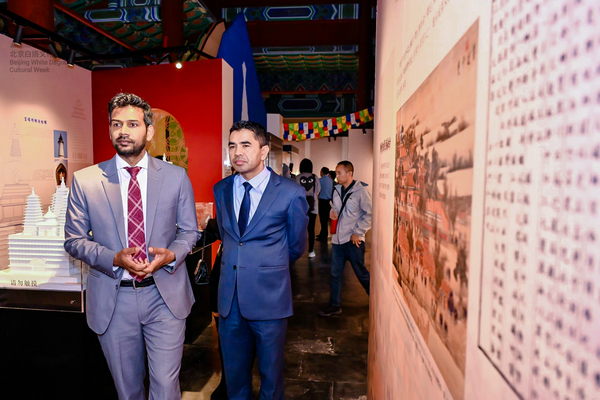

Arniko was a highly skilled artisan who helped build a dagoba in the Sa'kya region of Xizang, and he made a name for himself across Xizang and North China. When Kublai Khan decreed that a Buddha dagoba be erected on the historical site of the Yong'an Monastery, which had been destroyed, Arniko was assigned to design the white dagoba and to oversee its construction.
Seven hundred and fifty-three years later, Beijingers and anyone else with an ounce of interest are invited through Finding Arniko to learn a little about the man and to view what has become one of his most celebrated architectural accomplishments.
Gao said it is the first time he has devised a cultural game, something that has been a "special and memorable experience" for him. He chose the five most crucial moments in the history of Arniko's odyssey and incorporated these into the five main buildings of the White Dagoba Temple, he said. Visitors can immerse themselves in his adventure through interactive non-player character encounters, stepping into Arniko's world.
For the game Nepalese students in Beijing assume the various roles encountered by Arniko on his journey from Nepal to China. These roles include: Arniko himself; the king of the Malla Dynasty; Nepalese citizens; Phags-pa, the 1st "Guru for the Emperor" in the history of the Yuan Dynasty; and Kublai Khan, the founder of the Yuan Dynasty.
"I love the heart-warming joy of people from different countries coming together, something you can't experience any other way," Gao said. "I would jump at the chance to promote cultural exchange between China and Nepal in some other way.
"We wanted the public to be able to appreciate how deep the friendship between China and Nepal is, and to do so in an interesting way."
Liang Yuxuan, 21, a college student from Hong Kong, visits the temple and enjoys the game a lot. She said: "When I talk to Nepalese, I feel a cultural exchange through time and space, friendship between the two countries down the ages. It's very touching."
Strolling along Beijing's fabled hutong and its streets, a sense of history and culture seeps from between every brick, she said.